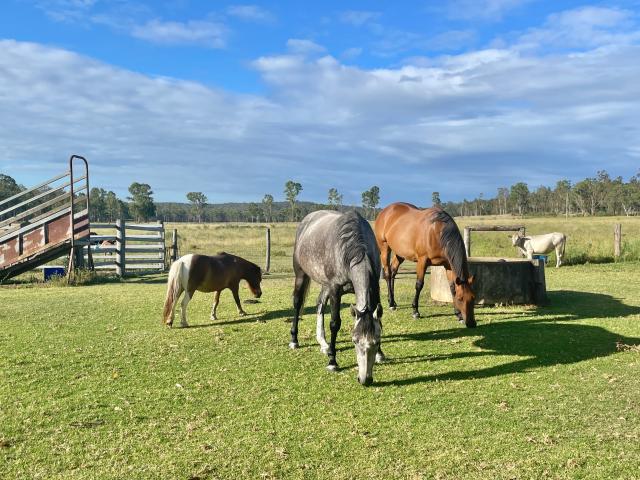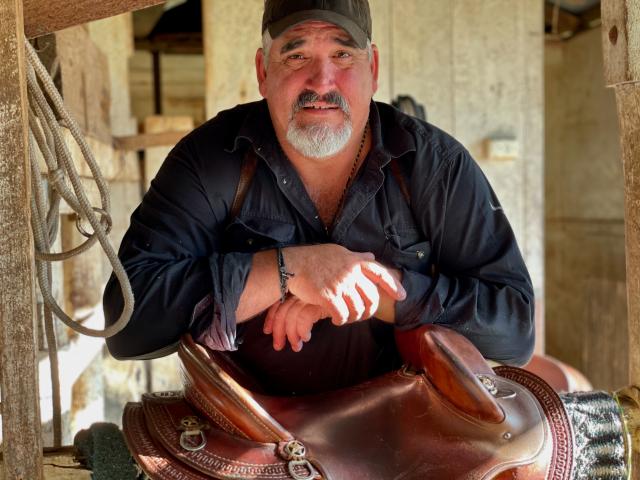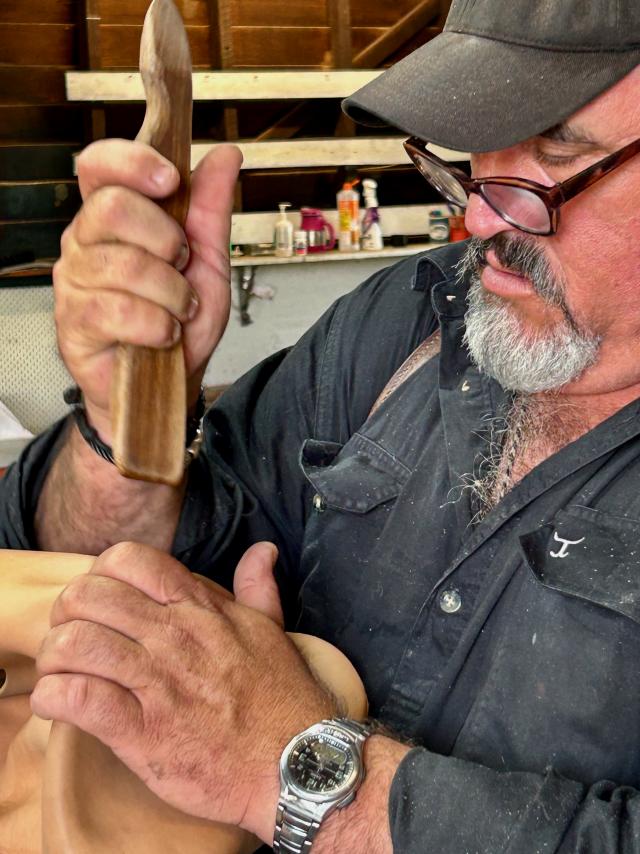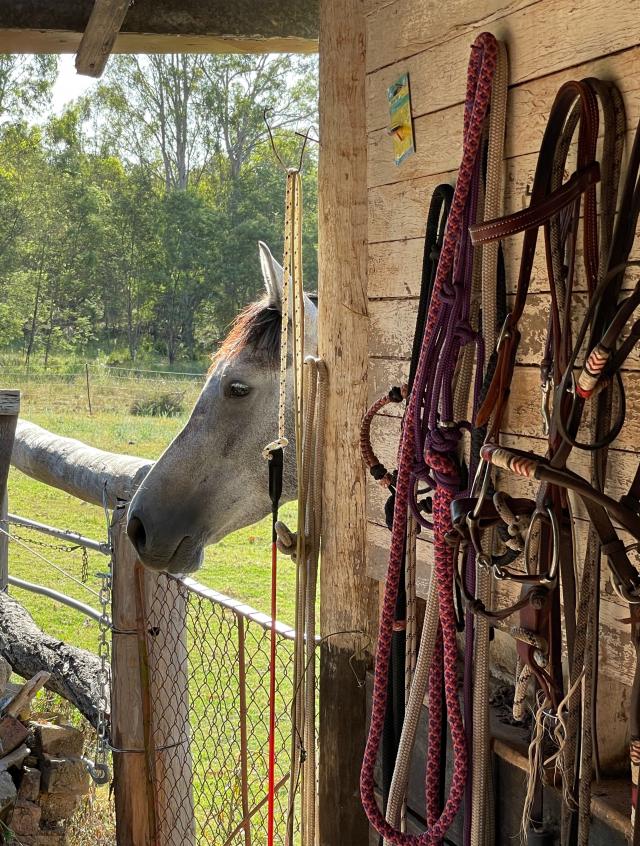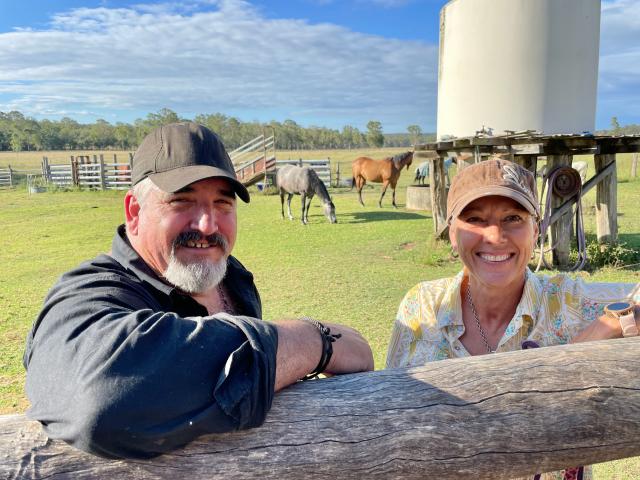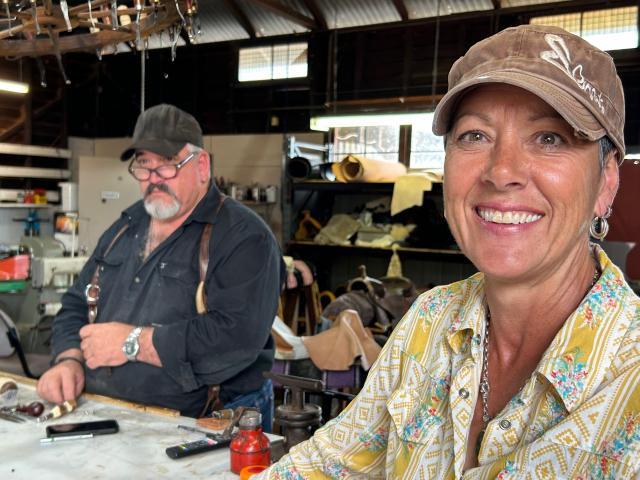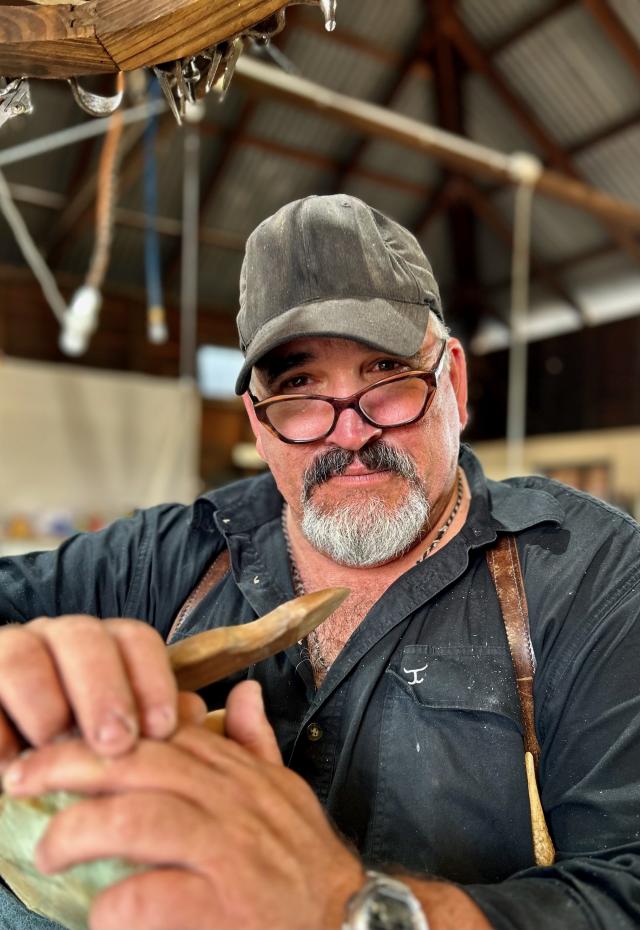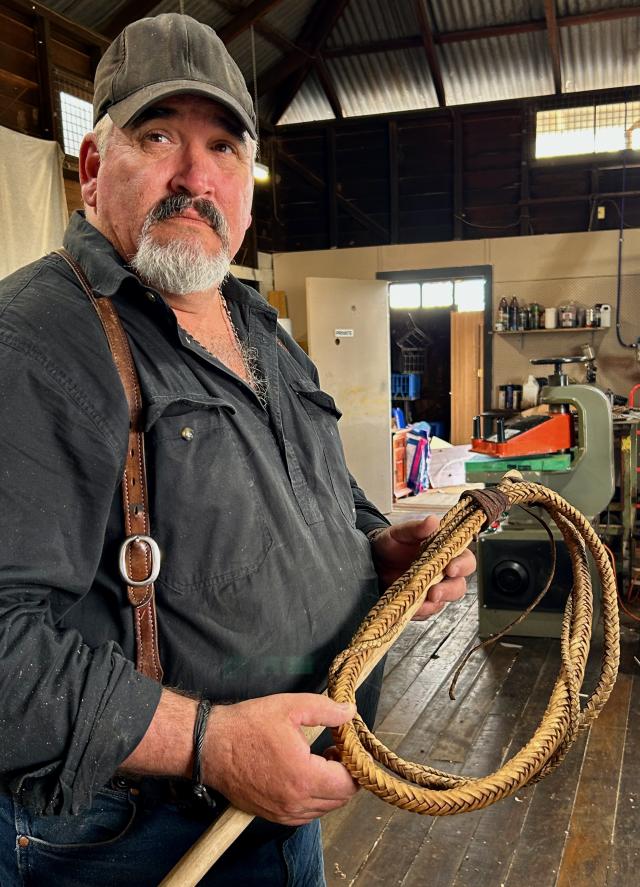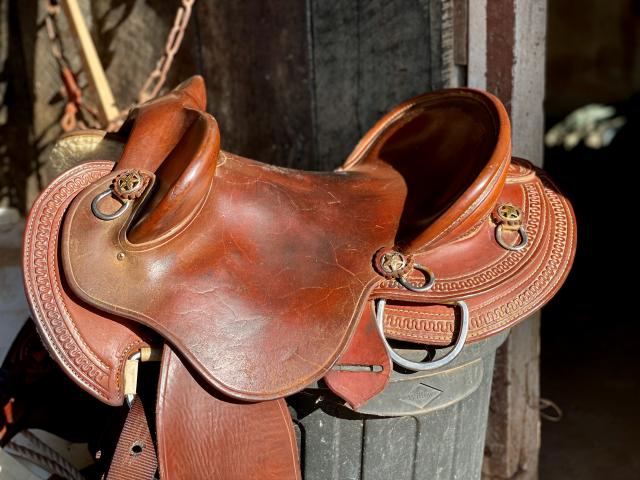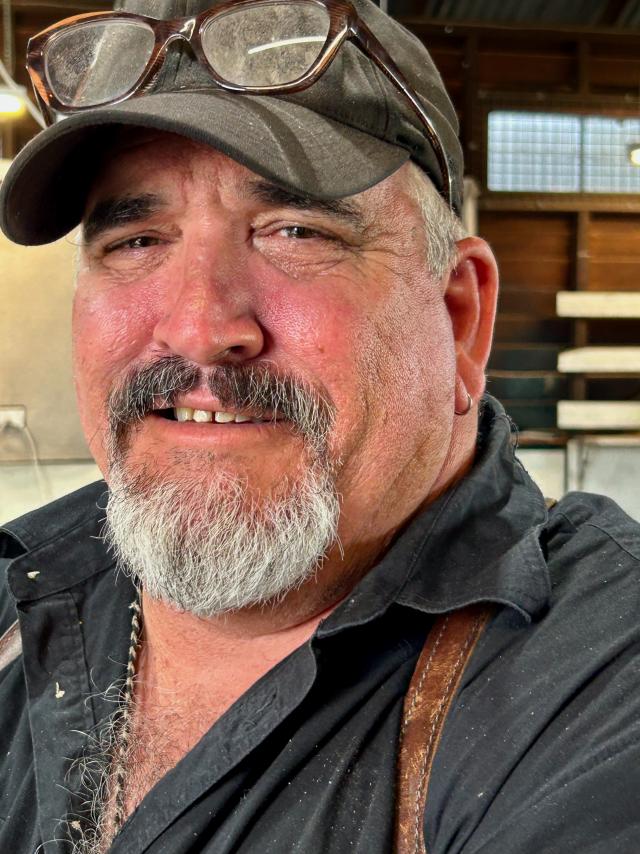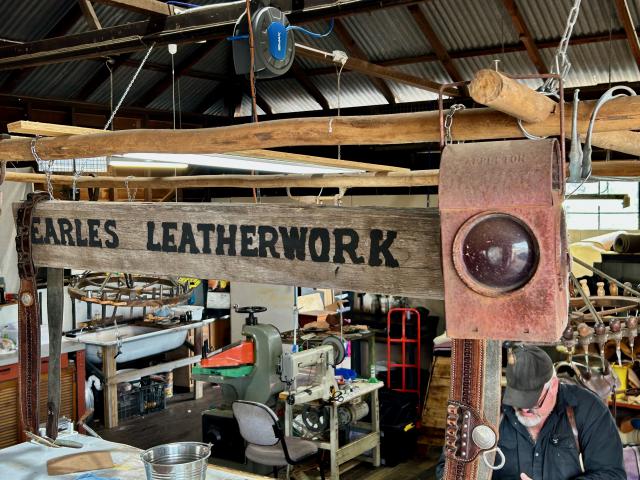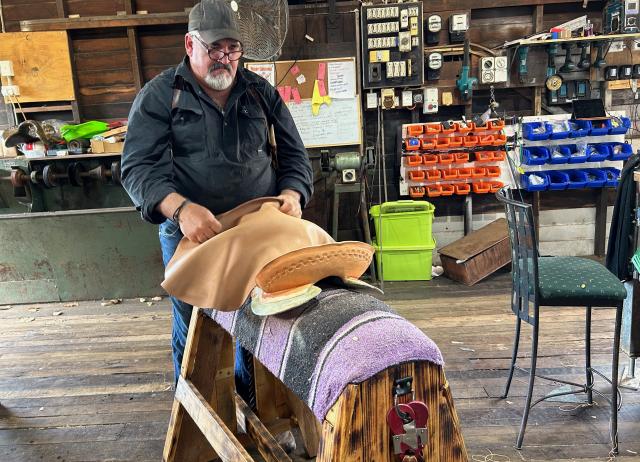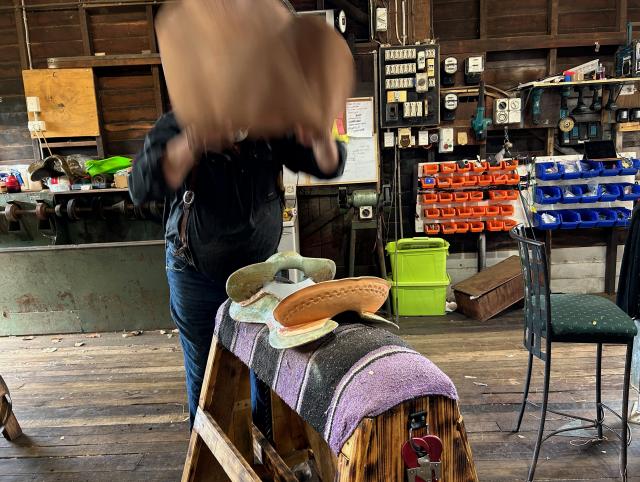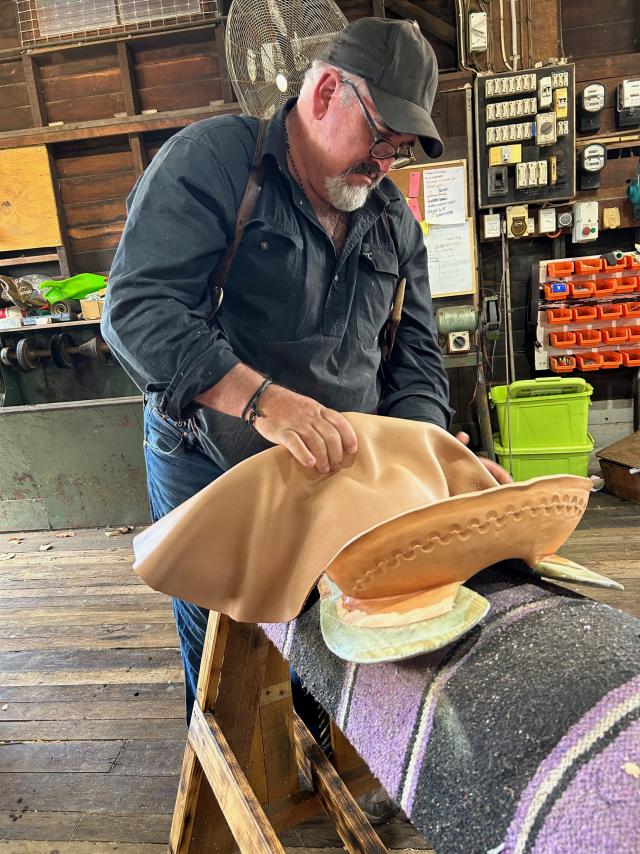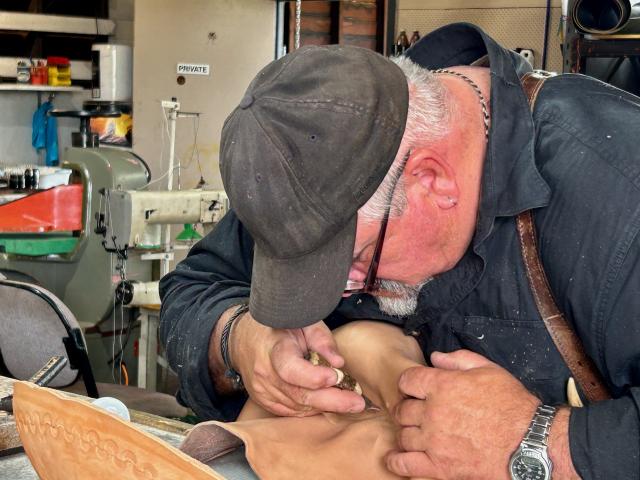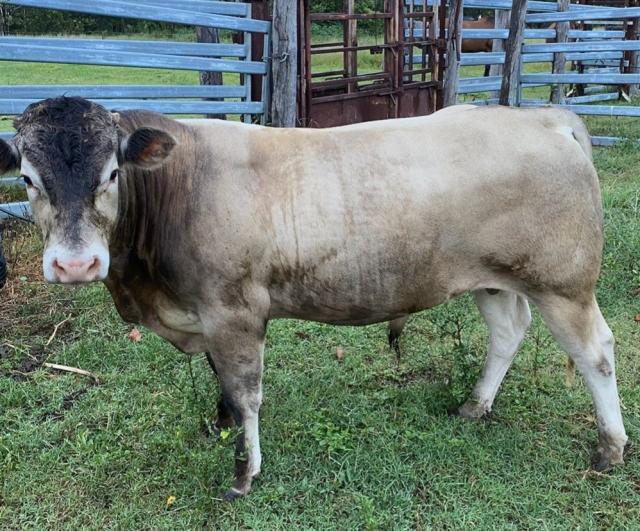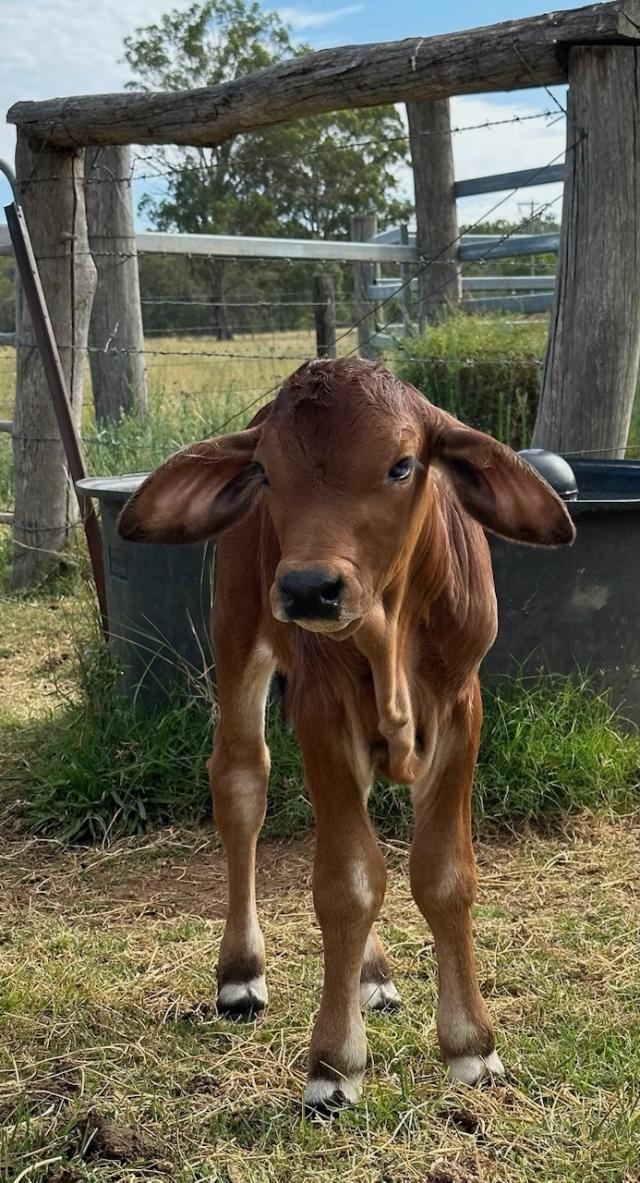Life’s journey can take you down many roads – some of them dusty, some of them leading to dead ends. Yet with persistence and a spirit of adventure they can also take you to where you are meant to be.
David and Tania Earle have travelled down many roads and their journey has led them to Wondai.
It’s as if they were always going to settle in the South Burnett town.
David is a saddle maker and leather worker while Tania helps with the marketing. Yet she also has her own business, helping women regain order in their life.
This can range from cleaning, organising and coaching – to rebuilding their confidence through horse riding.
David and Tania both come from rural backgrounds – he was born in Maryborough and she was born in Toowoomba but grew up in Townsville.
While David started out mustering and doing horse work for people around Maryborough, Tania’s father was regional inspector for the Lands Department for 20 years at Townsville.
As a result they got to know all the cattle station owners in Northern Queensland.
Among them was the Atkinson family, who were attributed to developing the Droughtmaster breed of cattle due to their suitability to the tropical conditions.
Early in the 1930s the Atkinson family bought two cross-bred bulls, descended from a Bos indicus (Zebu or Brahman) into their herd.
By 1957 Lamont (Monty) Atkinson had produced this new breed, generally red in colour, highly resistant to ticks and tolerant of drought conditions while yielding a good quality beef carcass.
This background with horses and cattle – combined with a string of circumstances – saw David and Tania leave Maryborough last March and head for Wondai.
They wanted a property to run their livestock. Once that was taken care of, one thing led to another which saw them establish David Earle Custom Saddles, Gunbelts and Holsters three months later.
There, in Haly St, they custom fit and design hand-made Australian fender saddles – as well as roping, western and the Wade saddles favoured for livestock handling.
Each saddle is crafted to fit the rider, as well as the horse.
David has been a saddler for nearly 30 years now, and prides himself in producing items that are functional.
“We were living in Maryborough and saw a place for lease,” Tania said. “It was 125 acres close to town.
“We had been looking to head west due to a lot of circumstances in our lives.
“Dave was working as a driller throughout Queensland. He would come home and do saddles, gun belts and holsters that were on order.
“As I had started working my way out of paid employment, he did too.
“He wanted me to help build up his sales in saddles … it got to a point where we had nine saddles on order as well as eight gun belts and holsters on the board.
“He couldn’t keep doing everything.”
Working as a driller then coming home to work on the saddles, David said he wasn’t getting any downtime.
Then he suffered from Covid and couldn’t get clearance to continue his drilling work at the time.
“So we decided to come and have a look at this place,” he said.
“We opened the shop in June last year. It had been sitting vacant the whole time we’d lived here.
“It’s perfect. One shop off the highway and at the main intersection in town.
“The shopfront was already here. It’s been lots of different things; engineers, mechanics, upholsterers, crane hire, a second-hand joint.”
The majority of stock in the shop is by local artisans and craftspeople, and is being sold on consignment.
“Something we’ve wanted to do from the time we lived in Maryborough was to give people the opportunity – with the stuff they make at home – to have exposure to sell it,” Tania said.
“When David gets time we will be putting some of his craft in there too.”
You cannot help but feel the atmosphere of the shop the moment you walk in the door – the timber floors, the galvanised iron walls, the shafts of light coming through the windows and the open door at the back to break up the shadows.
David’s leatherwork tools hang from a coach wheel suspended above the workbench – much like a chandelier would in a luxury home.
Belts hang in the workshop, along with memorabilia from life in the bush such as bridles, harnesses and a bullock-team driver’s whip.
Out the front are saddle racks from a craftsman in Tiaro.
By displaying his gear, David is able to use the racks to show his saddles.
“You’ve got to have community spirit,” he said.
“Since we opened the doors we have supported the RSL, the show society … we are always willing to help whichever way we can.”
Saddle sales come mainly from orders, Tania said.
“Our target market is women my age who are returning to the saddle after so many years off.
“Otherwise they have had a fall, and are no longer confident … even with their saddle.”
For David, saddles should be designed as an investment. You have to look after them.
“We don’t do cookie-cutter saddles,” Tania said.
“We do pelvic mapping.”
That means having a discussion with the client about their needs for a saddle, then charting how they sit and their movement.
“We ask a series of questions – we don’t do off-the-shelf,” Tania added.
“If you want it in a short space of time, you are more than welcome to go to a big saddlery shop and buy it because that’s not what we’re about.”
Talking with David and Tania, if there’s one thing Covid has taught us it is to appreciate what is on offer, the work and skill that has gone into a product rather than convenience for convenience sake.
David always likes to make something the rider is comfortable in.
“I used to muster for a living. I know what it’s like to sit in a saddle for 12 hours then get out of it and not be able to walk because the saddle didn’t fit me right.
“But that was all that was available at the time.
“Through the years of working out how I want to build saddles, I decided to make mine differently.
“I haven’t seen anything else like the seats I’m putting in. There are people doing close … but I do a full web seat and still have a hand-hold.”
The tree – or base – is what the rest of the saddle is built on.
David uses a wood/fibreglass tree or a wood rawhide-covered one.
He then builds on top with leather to shape the seat, then uses foam.
The webbing is for comfort.
“Actually, I found this wood/fibreglass tree is light, flexible, and there’s a bit of movement if needed.
“You can drive a nail or a screw into it and it takes.”
Testament to their lives in country Australia, David’s grandfather worked on the renovations to the Birdsville Hospital.
His great aunt represented Australia at the 1956 Melbourne Olympics in equestrian.
As for himself, David started mucking around with leather at the age of 19.
What he loves is the fact it is a natural product, that’s got depth and feeling.
“It can be forgiving, depending on what you’re doing with it.
“No two pieces are the same, no two saddles, no two holsters.
“I’ve worked for saddlers all the way up to Charters Towers. Then I went into mining and now I’m working for myself, doing saddles.
“The response from the community has been great. We are getting known.”
Saddle orders can come from all over.
There have been some recent sales to an equestrian park near Orange, New South Wales.
“The owner had a bad fall, and lost her confidence,” Tania said.
“She saw the deep seat on Dave’s saddles and that made her feel confident.
“Our pelvic mapping finds your balance point and that makes you more comfortable and more confident.
“You are right there with your horse.
“Dave moulds the seat for ‘CBC’ – comfort and balance equals confidence.”
More and more locals are getting to know the saddlery is in town, Tania said.
“We are wanting this shop to put Wondai and the South Burnett on the map.
“It’s so undiscovered.
“People need to get out of their back door and discover what’s on offer.
“We want to get people out here to discover the South Burnett, and while they’re here do a course, do a workshop.
“There will be a course every month – whip making in February, belt making, saddle making and we’ve been asked to do bridles.”
The couple are also promoting the fact people can organise their own workshops.
There is an NDIS client who comes in for leatherwork and there are school holiday programs.
“Dave is a born teacher,” Tania said. “The kids just love it. He gets them used to working with leather.”
A key to good leatherwork is the quality of the product and the consistency.
“The process of tanning is much the same but I don’t want variation,” David said, “… not thick one end and thin the other, not sloppy.”
Saying that, he can make a belt in 15 minutes – not carved but to the standard of RM Williams or Thomas Cook with brass or steel buckle.
His gun belts for holding shotgun cartridges or bullets are another facet of the business, along with gun holsters.
Some have even been used in western movies, such as those streaming services.
“There’s a sport in Australia – single action shooting (SASS) – or cowboy action shooting,” David said. “It’s where there is a single cock of the gun rather than automatic firing.
“Members can use all three guns – a six gun, a single-action rifle and a double-barrel shotgun.
“Most gun clubs can shoot SASS.”
It was the search for somewhere to keep their cattle and horses that led David and Tania to Wondai.
They have four horses and 13 heifers at the moment.
The cattle are a mix of Brahman and some Droughtmasters, and they have just put a Bazadaise bull over them.
The Bazadaise originate from the Bordeaux region of southern France, with a herd book established in 1895.
They were introduced into Australia in 1991 and range in colour from charcoal or dark grey to light grey.
As well as high growth rates and feed efficiency, and high-yielding carcasses, they have proven their ability to endure and thrive in the varying Australian climatic conditions from the cooler temperate climate of Tasmania to the hot, arid plains of the Northern Territory.
There are also some new Red Angus and Black Angus heifers.
The horses are used for trail work – a station-bred mare, a thoroughbred, a quarterhorse cross Andalusian, and a miniature horse.
“If it wasn’t for them we probably wouldn’t be out here,” Tania said, “so we have a lot to thank them for.
“We needed a place for them.”
Both David and Tania have been involved in some iconic horse rides over the years.
In 2011, David was among those who took 40 riders from Nanango – along parts of along Australia’s National Trail – to celebrate 150 years of Maryborough.
Tania tells me about the 1988 re-enactment of the mail run from Ingham to Valley of Lagoons Station.
At the age of 76, Fred Williams – a legend of the bush – took part in the re-enactment of the run he undertook in 1934.
There were 140 riders taking part.
The property was owned by Monty Atkinson but the Sheahan family run it now, with Dan Sheahan having written the Slim Dusty ballad The Pub With No Beer.
Tania’s business ReFinding You Professional Organising is about helping women regain order in their life.
Part of it is putting horses with people who have been abused or been through difficult times.
“It’s about rehabilitating … healing through horses, growing their confidence in themselves again, to feel again. Especially if they are coming from abuse.
“A horse is your greatest reflection of yourself. And the greatest teacher of who you are or who you are meant to be.
“Horses have incredible perception.
“If you can take a woman who has no idea of who she is because of the life that has happened to her, and you can take her out and get her to experience that relationship and that connection you get from a horse – one you won’t get from any other animal. That’s life changing.
“You become one – you perceive each other’s thoughts, feelings. That’s what you get when you are truly connected to your horse.
“When you allow that to happen.”
David and Tania show how living your passion can have a very positive impact on a community.
They take great pride in the quality of their work, and the town they live in.
This shines through in what they do with their animals and people every day.

